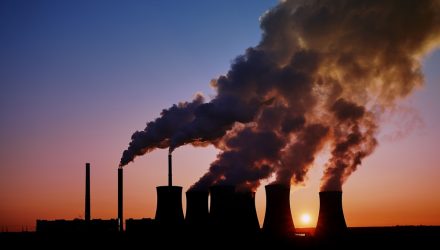The International Energy Agency released its annual flagship report this month regarding emissions for 2021. Its findings? Carbon dioxide emissions globally grew 6% from 2020 levels, resulting in 36.3 gigatons of emissions released into the atmosphere.
The economic shutdown surrounding the onset of the COVID-19 pandemic in 2020 saw emissions falling globally but they have since bounced back to even higher levels than before. Now with the war in Ukraine and many countries turning more aggressively to oil account for a sudden drop in global supply, and backfilling fuel needs with coal, emissions are only expected to get worse.
“The recovery of energy demand in 2021 was compounded by adverse weather and energy market conditions, which led to more coal being burnt despite renewable power generation registering its largest ever annual growth,” wrote the authors of the IEA report.
In 2021, coal drove 40% of the carbon emissions growth and emissions from coal are currently at 15.3 gigatons, the highest ever on record. Record prices for natural gas, particularly in Europe, also drove a reliance on coal as the costs were much cheaper to run coal plants over gas-fired power plants.
Electricity generation from renewable energy sources as well as nuclear power was actually higher than electricity derived from coal in 2021. Renewable energy reached a record high last year, exceeding 8,000 terawatt-hours, 500 TWh above 2020 with wind and solar contributions both increasing. This increased contribution from renewables helped to curb what would have been a much higher increase in carbon emissions, but there is still a long way to go.
Capturing the Energy Transition through Carbon Allowances
The KraneShares Global Carbon ETF (NYSE: KRBN) offers the first-of-its-kind take on carbon credits trading and is in a position to capture the rise in carbon allowance prices as emissions limits become more stringent.
KRBN tracks the IHS Markit Global Carbon Index, which follows the most liquid carbon credit futures contracts in the world.
This includes contracts from the European Union Allowances (EUA), California Carbon Allowances (CCA), and Regional Greenhouse Gas Initiative (RGGI) markets. North American pricing data is supplied by IHS Markit’s OPIS service, while European prices are supplied by ICE Futures Pricing.
KRBN invests in its futures contracts via a Cayman Islands subsidiary, meaning that it can avoid distributing the dreaded K-1 tax form to its shareholders.
KRBN carries an expense ratio of 0.78% and has nearly $1.3 billion in net assets.
For more news, information, and strategy, visit the Climate Insights Channel.

